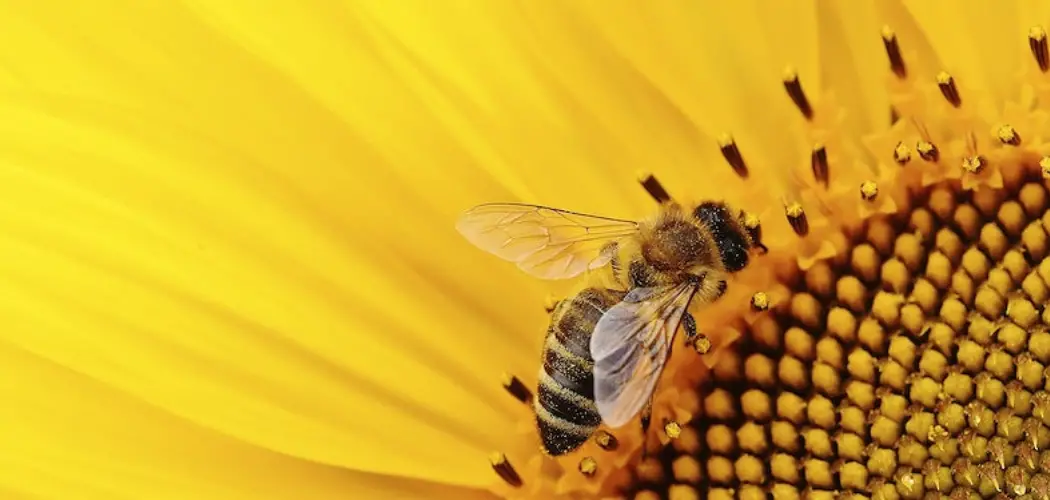Bees are vital to our ecosystem, playing a key role in the pollination of plants and crops. However, their presence can become problematic when they are attracted to light sources around homes and gardens. This attraction can lead to increased bee activity in areas where human interaction is frequent, posing a risk of stings and potential allergic reactions.
This guide will walk you through how to get rid of bees attracted to light, providing tips and techniques to help simplify the task. Understanding why bees are drawn to light and implementing effective strategies to manage their attraction can help maintain a safe and harmonious living environment while respecting these important pollinators.
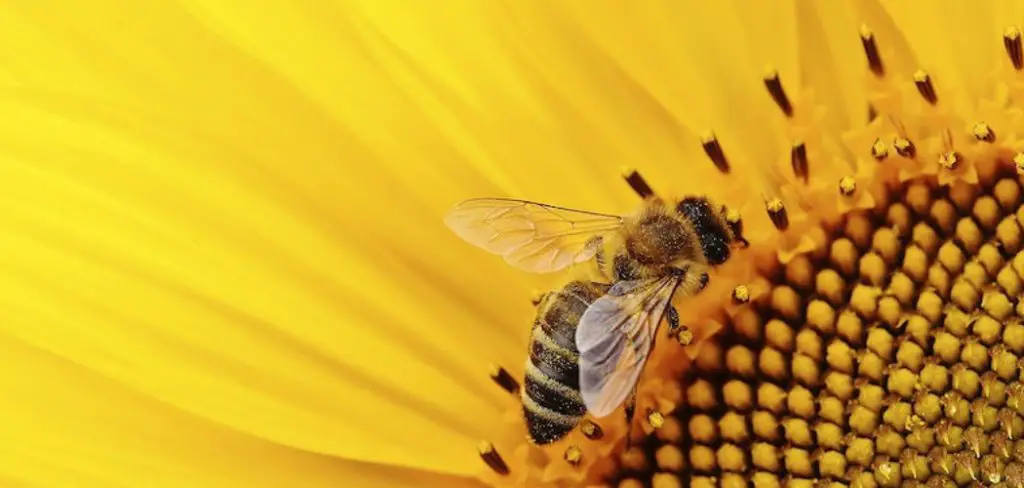
Why Are Bees Attracted to Light?
Bees, like many other insects, are generally attracted to light due to their natural behavior known as phototaxis. This behavioral response causes insects to move towards or away from a light source, and in the case of bees, they exhibit positive phototaxis, meaning they are drawn towards light.
This attraction is likely a result of their evolutionary adaptation, as bees use sunlight to navigate and orient themselves when flying. The artificial lights around homes and gardens can confuse them, leading to increased activity around these light sources during dusk or dawn, when they typically would rely on natural light. Understanding this can help us employ strategies to manage and reduce their presence around our homes.
Importance of Addressing the Issue
Addressing the issue of bees being attracted to light is crucial not only for ensuring human safety but also for the protection of these essential pollinators. When bees congregate around artificial lights near homes, it increases the likelihood of encounters with humans, which can lead to defensive stinging incidents and potential allergic reactions.
Reducing bee activity around light sources helps minimize these risks, making outdoor spaces more comfortable and safe for residents and visitors. Additionally, by managing bee attraction to artificial lights, we reduce the stress on bee populations caused by disorientation and energy depletion as they attempt to navigate back to their hives.
This considerate approach not only helps preserve our shared outdoor environments but also supports the well-being of bees, contributing to the sustainability of local ecosystems and agricultural practices dependent on pollination.
Types of Lights That Attract Bees
Not all lights are equally attractive to bees. The type and intensity of light can significantly influence bee behavior. Bees are particularly drawn to ultraviolet (UV) light, which they use in their natural environment to locate flowers. Therefore, common light sources that emit significant UV radiation can attract bees.
Furthermore, lights with a higher blue and violet spectrum are more likely to catch the attention of bees. Such lights often include fluorescent bulbs, mercury vapor lamps, and certain types of LED lighting. Understanding these characteristics can be valuable in choosing lighting solutions that minimize unwanted bee attention, thereby reducing the risk of bee-human encounters in illuminated areas.
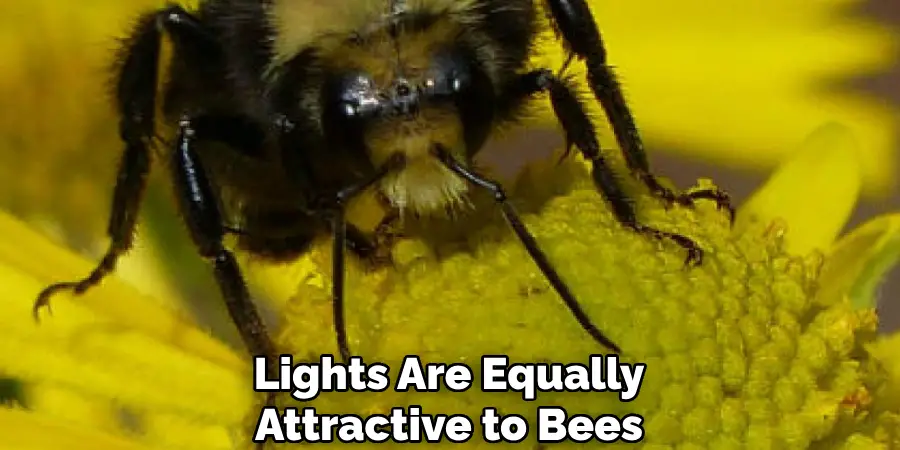
10 Effective Methods How to Get Rid of Bees Attracted to Light
Bees play a crucial role in our ecosystem, pollinating plants and contributing to biodiversity. However, when they start buzzing around your porch light or garden lamps, they can become a nuisance. This listicle provides practical and eco-friendly methods to deter bees attracted to light, ensuring a peaceful evening without compromising the environment or harming these vital insects.
1. Use Yellow Light Bulbs
Switching to yellow light bulbs is a simple yet effective way to deter bees. Unlike regular white lights, yellow bulbs emit a wavelength less attractive to insects. According to research, bees find it challenging to perceive yellow light, making your outdoor areas less inviting to them.
2. Install Bee Deterrents
Consider installing commercially available bee deterrents around light sources. These devices often use natural ingredients or emit specific frequency sounds that bees dislike, encouraging them to stay away without causing harm.
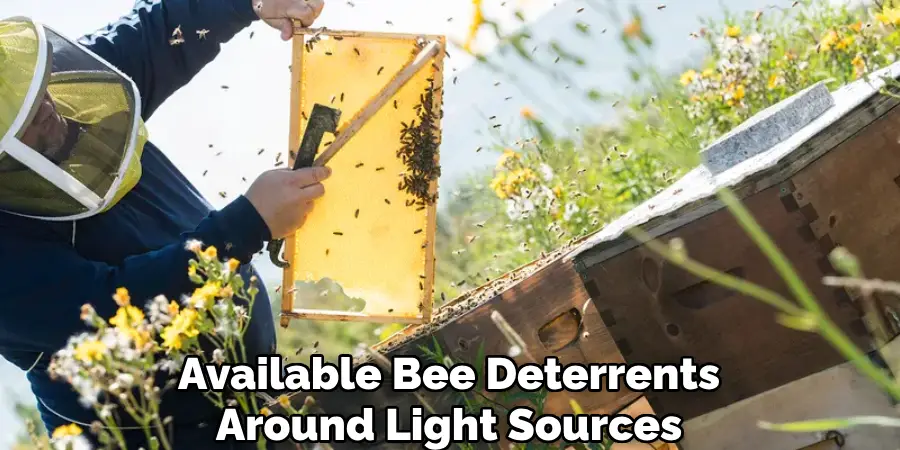
3. Use Essential Oils
Certain essential oils like peppermint, eucalyptus, and citronella act as natural bee repellents. Mix a few drops of these oils with water in a spray bottle, and spritz around light fixtures. The strong scent will keep bees at bay while adding a pleasant aroma to your outdoor space.
4. Relocate Nesting Sites
If bees are consistently drawn to lights, they might be nesting nearby. Look for nests during the day when bees are less active and call a professional beekeeper to safely relocate them. This method preserves the bees while removing the source of attraction.
5. Set Up a Bee-Friendly Area
Create a designated spot in your garden with bee-attractive plants away from light sources. This space can provide bees with the nectar they seek, reducing their inclination to wander toward lights. Lavender and sunflowers are great choices for this purpose.
6. Cover Light Fixtures
Use covers or shields on outdoor lights to direct illumination downward, minimizing light dispersion that attracts bees. This approach also improves nighttime visibility, creating a win-win situation for you and your flying visitors.
7. Reduce Light Usage
Cut down unnecessary light usage during peak bee activity hours. Turning off lights or using motion sensors can significantly decrease bee attraction, reducing their presence naturally without any intervention.
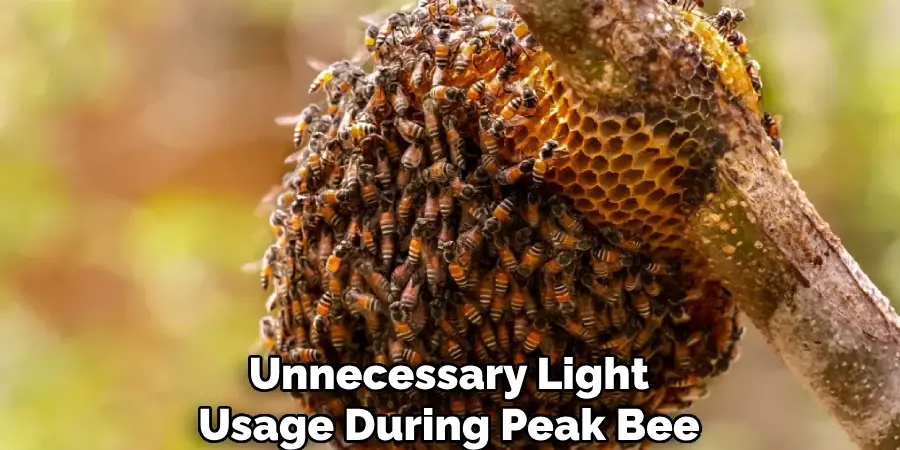
8. Employ Natural Predators
Encourage natural predators like birds by installing birdhouses or feeders. Birds can help control the bee population around your home, creating a balanced ecosystem and reducing the number of bees drawn to lights.
9. Regular Maintenance
Check for and fix any gaps or cracks around light fixtures where bees might build nests. Regular maintenance prevents these from becoming hotspots for bee activity, allowing you to enjoy a bee-free zone.
10. Educate Yourself and Others
Stay informed about bees and their behaviors. Educating yourself and your community about the importance of bees and how to manage them responsibly can foster a harmonious relationship with these essential pollinators.
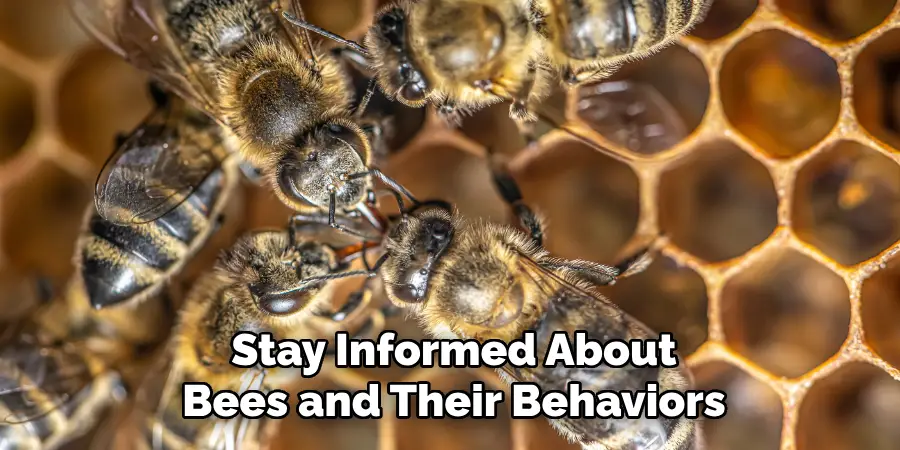
Maintenance and Upkeep
Effective maintenance and upkeep are crucial in ensuring that areas around your home remain free from unwanted bee activity. Regularly inspect outdoor light fixtures to check for any signs of bee nesting or habitual gatherings. This involves looking for gaps or crevices where bees might establish nests, as well as cleaning the fixtures to prevent any accumulation of residue that might attract bees.
Consider the type of bulbs and the frequency of their use, aiming to switch to bee-deterrent solutions where appropriate. Moreover, implementing periodic checks of deterrent devices or oils can keep them functional and effective. Keeping these practices in mind helps maintain a safe and comfortable outdoor environment, minimizing unplanned encounters with bees while still respecting their role in the ecosystem.
Troubleshooting Common Issues
Dealing with bees attracted to light can present several challenges, even when preventive measures are in place. Here are some common issues you may encounter and strategies to address them:
Persistent Bee Activity
If bees continue to gather around lights despite using yellow bulbs or deterrent devices, it may indicate nearby nests. Confirm that all potential nesting sites are checked, and consider consulting a professional beekeeper to relocate any nests safely.
Ineffective Essential Oils
When essential oils don’t seem to repel bees, ensure they are freshly mixed and are of high quality. The potency of the oils can diminish over time, so replenishing them regularly is advisable. Experimenting with different types of oils or combinations may yield better results.
Inadequate Lighting Solutions
If covering light fixtures does not reduce bee attraction, evaluate the type and design of the cover. Some covers may still allow significant light dispersion, so opt for those designed to focus lighting downward effectively. Additionally, reassess the intensity and placement of lights to further minimize attraction.
Unexpected Nest Discoveries
Sometimes, bees can establish nests in hidden or hard-to-reach areas. If new nests are discovered, prioritize safety, and consult with professionals for careful relocation. Avoid handling bees without proper understanding or equipment, as this could provoke aggressive behavior.
Common Mistakes to Avoid
Implementing strategies to keep bees away from light sources is effective, but some common mistakes can hinder your efforts. Here’s what to watch out for:
Ignoring Regular Maintenance
Skipping regular inspections can lead to unnoticed nests or ineffective deterrents. Maintain a consistent schedule for checking and maintaining light fixtures and deterrents to ensure they are working as intended.
Overusing Artificial Repellents
While artificial bee deterrents can be effective, relying too heavily on them without considering natural alternatives may disrupt local ecology. Balance their use with eco-friendly options and mindful practices.
Neglecting to Identify Bee Species
All bees are not created equal. Some species may not be significantly attracted to light. Understanding the specific bee species around your home can tailor your approach more effectively, without unnecessary measures.
Conclusion
Managing bee activity around outdoor light sources requires a balanced approach that respects these vital pollinators while ensuring a comfortable living space. By implementing a combination of strategies such as using bee-deterrent lighting, securing potential nesting areas, and encouraging bee-friendly zones, homeowners can effectively reduce unwanted bee gatherings. Thanks for reading, and we hope this has given you some inspiration on how to get rid of bees attracted to light!

